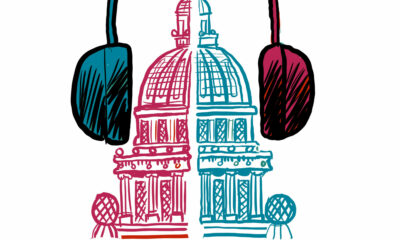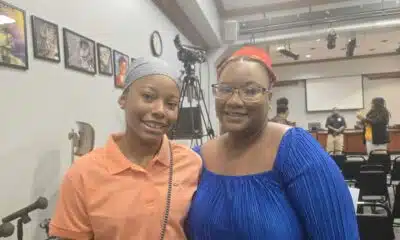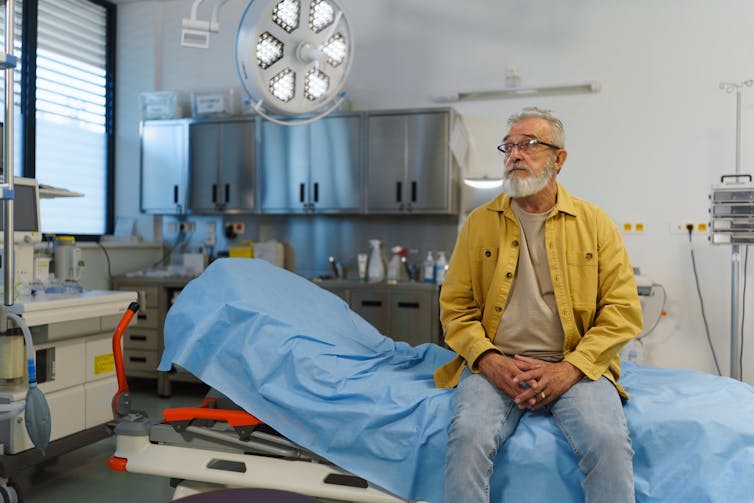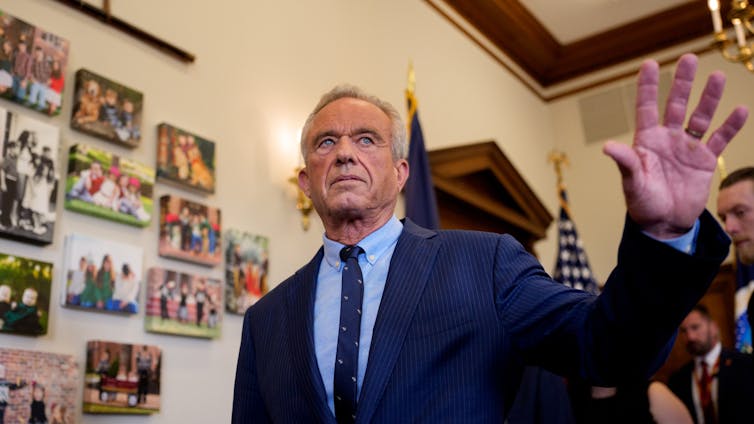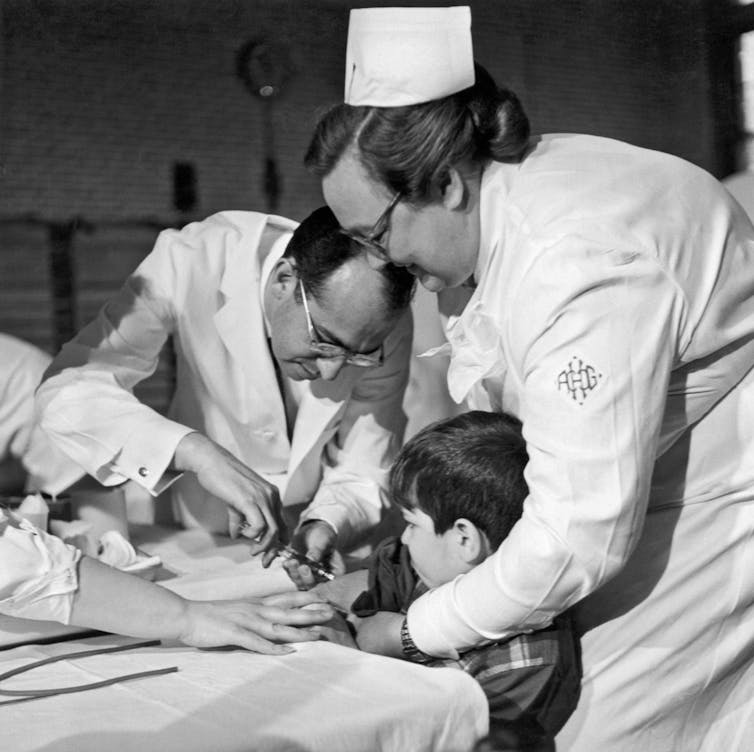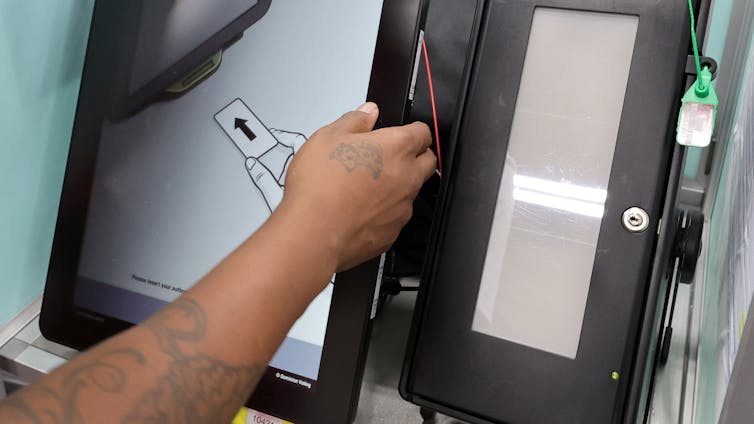
AP Photo/Gregorio Borgia
Michelle Riba, University of Michigan
On the morning of Easter Monday, after his final public address the day prior, Pope Francis died at age 88, closing 12 years of leading the Catholic Church. He joins the phenomena of people “holding on” until after an anticipated date or event, such as the holidays or a birthday, before dying.
It sometimes seems like some patients are able to stay alive out of sheer willpower. But for many people, behind the scenes are a village of people and an ongoing series of conversations that help patients be able to celebrate their child’s graduation or travel to a place they’ve always wanted to go.
We asked Dr. Michelle Riba, director of the psycho-oncology program at the University of Michigan Rogel Cancer Center, to explain how meaning matters just as much as medicine at the end of life.
What factors come into play at the end of life?
Psychosocial factors that affect a person’s mental health and well-being – such as stress, social support, depression and anxiety, and socioeconomic status – play an important part of all parts of life, but especially at the end of life. End of life refers to the days, weeks or months after somebody is told that they have a disease that can be fatal.
Questions about meaning and what’s important to a patient and their family are important at all times. But when somebody is diagnosed with a grave illness, these questions become particularly important to acknowledge in medical conversations. As many doctors like to say, patients aren’t the disease, they have a disease.
We want to give patients control about how they want to live their lives in the most meaningful way, especially at the end. And this includes how they want to use their time, energy and resources, who they want to spend their time with and where they want to be.
How does the ‘will to live’ affect treatment and survival?
There was a new movement starting in the 1960s to 1970s that believed a person’s attitude and outlook on life could affect their health and longevity. People like minister Norman Vincent Peale promoted the idea that a positive mindset could help improve outcomes. Psychologist Martin Seligman developed the field of positive psychology that focused on subjective well-being by promoting resilience and human flourishing. The idea that you could do better if you were optimistic resonated with many people, including physicians.
Then surgeon Bernie Siegel proposed the specific idea that staying positive after a cancer diagnosis could extend your life, and that became a major focus of the movement. However, there was little to no data to support his claims. The studies researchers conducted to figure out whether it was true that people who were more positive lived longer or had a lower prevalence of cancer than those who did not were either flawed or did not consistently show this effect.
Eventually Siegel’s ideas were disproved. But for a long time, they affected how patients felt about themselves and how their families addressed illness. My own patients would tell me, “How can I be positive? I can’t eat, I’m in pain and I’m sick.” They felt guilty that they couldn’t feel positive and optimistic, and that caused extra stress and reduced their quality of life.
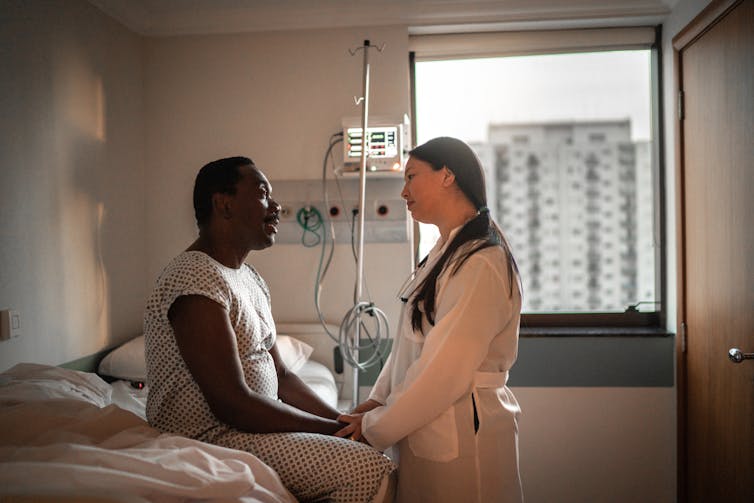
FG Trade/E+ via Getty Images
Additionally, the social determinants of health – such as a patient’s environment, race, education and wealth – are also very important to their health and longevity. Having a good social life, money and not being discriminated against makes it easier to stay positive and do better in life. During the COVID-19 pandemic, people were less likely to do well if you didn’t have money, or if you were a certain race.
Research shows that patients who have severe mental illness such as schizophrenia and bipolar disorder often live about 20 years less than somebody who doesn’t. And it’s not just because of the disease. Having a severe mental illness means that you probably can’t work, you probably don’t have financial means, and you may not have family support.
How can doctors help patients feel like they have more control?
In studying how patients could feel more confident, physicians like me realized that having control over their destiny, if you will, didn’t necessarily mean patients had to stay positive. Rather, it meant understanding the things that gave them joy and meaning before their diagnosis, and how clinicians could help them continue to do these things.
For example, a patient who could no longer work because of their cancer or their treatments might miss their sense of routine. Working with them to make a schedule of all their medical appointments and enjoyable activities might help them take control over their days. The structure may provide meaning and help them cope better.
A marathon runner who loses their ability to balance due to a brain tumor is another example. If this patient found meaning and pleasure in running but could no longer run, what could we do to help them regain some of this joy? This might look like starting physical therapy and rehab, or finding alternative activities they can do.
If going to their place of worship is important to a patient but they’re no longer able to, we could see if their rabbi, imam or minister could see them at their home.
Additionally, helping patients continue doing what’s meaningful for them also gives them hope. It helps them know that their physicians feel they’re worth doing that for, and that there’s a life beyond cancer treatment.
How do a patient’s goals factor into their treatment plan?
When doctors give patients hope, patients tend to have better outcomes. That doesn’t mean we’re telling patients something false, or that they’re going to live a longer time. Rather, doctors can help patients improve or maintain their quality of life and achieve certain goals.
For example, a patient may be thinking of attending their child’s graduation two months from now. Their care team can talk to them about how they might be able to do this, or think of other ways they can celebrate.

Joshua Hoehne/Unsplash, CC BY-SA
My mother passed away from cancer a month after I graduated high school. I remember she couldn’t participate in a lot of senior prom activities, like helping me get a dress or do my hair. But my date and I and another couple were allowed to go to her hospital room just before the prom so she could see us all dressed up. And it was one of the most meaningful moments of my life. Though she couldn’t be there for graduation or all the other preparations and celebrations, it mattered to my mother and me that she was able to see my friends and me before prom. Also, very meaningfully, my friends were so kind and thoughtful to make that effort on our behalf.
There have been observations that some patients with terminal illness manage to hold on until after a certain holiday or date. A 1988 study found that the number of Jewish people who died before Passover was lower than expected, and the number of deaths after Passover was higher than expected. While this study had flaws and limitations, other researchers have made similar observations for deaths for specific groups after holidays like Christmas, the Mid-Autumn Festival and birthdays.
But these studies don’t address whether those specific holidays were actually what these patients really cared about. It may be that people made it through something else important to them. It may be that they were able to be with the people they loved at the end. It may be something else entirely. We don’t really know what’s important for someone unless we ask.
Allowing patients and their families to think about what matters most to them and how we can help them achieve their goals is part of our job as physicians.
How do you balance a patient’s medical care with their goals?
Being diagnosed with a terminal illness can be a traumatic event. Patients often can remember where and when they heard the news about a certain illness or scan or problem. How to help people process, understand and live with this to the best of their ability is really the key to having the best quality of life. This means giving them choices and helping them see some ways to address it for themselves and their families.
Sometimes that can be really hard. For patients who really want to travel somewhere, we might figure out a way to defer specific treatments or procedures, or set up appointments for them to be done at the local hospital or clinic. But there’s not much we can do for a patient who wants to attend their young child’s wedding when that won’t be for decades in the future. The medical team does everything it can within reason, and it tries to make sure the patients and their loved ones understand the risks and benefits.

Maskot/DigitalVision via Getty Images
Doctors and patients may also have different goals that can be difficult to meet at the same time. Figuring out how to juggle these agendas and listening to each other during these conversations can be challenging but important.
Everybody is trying to do what they think is right and best for the patient. This means taking care of the whole person, not just the disease. Whether that means reaching a certain holiday or special event, or just gathering together with the people they love, taking the time and effort to understand what is important for the patient and their family is key to good care.
Michelle Riba, Clinical Professor of Psychiatry, University of Michigan
This article is republished from The Conversation under a Creative Commons license. Read the original article.



